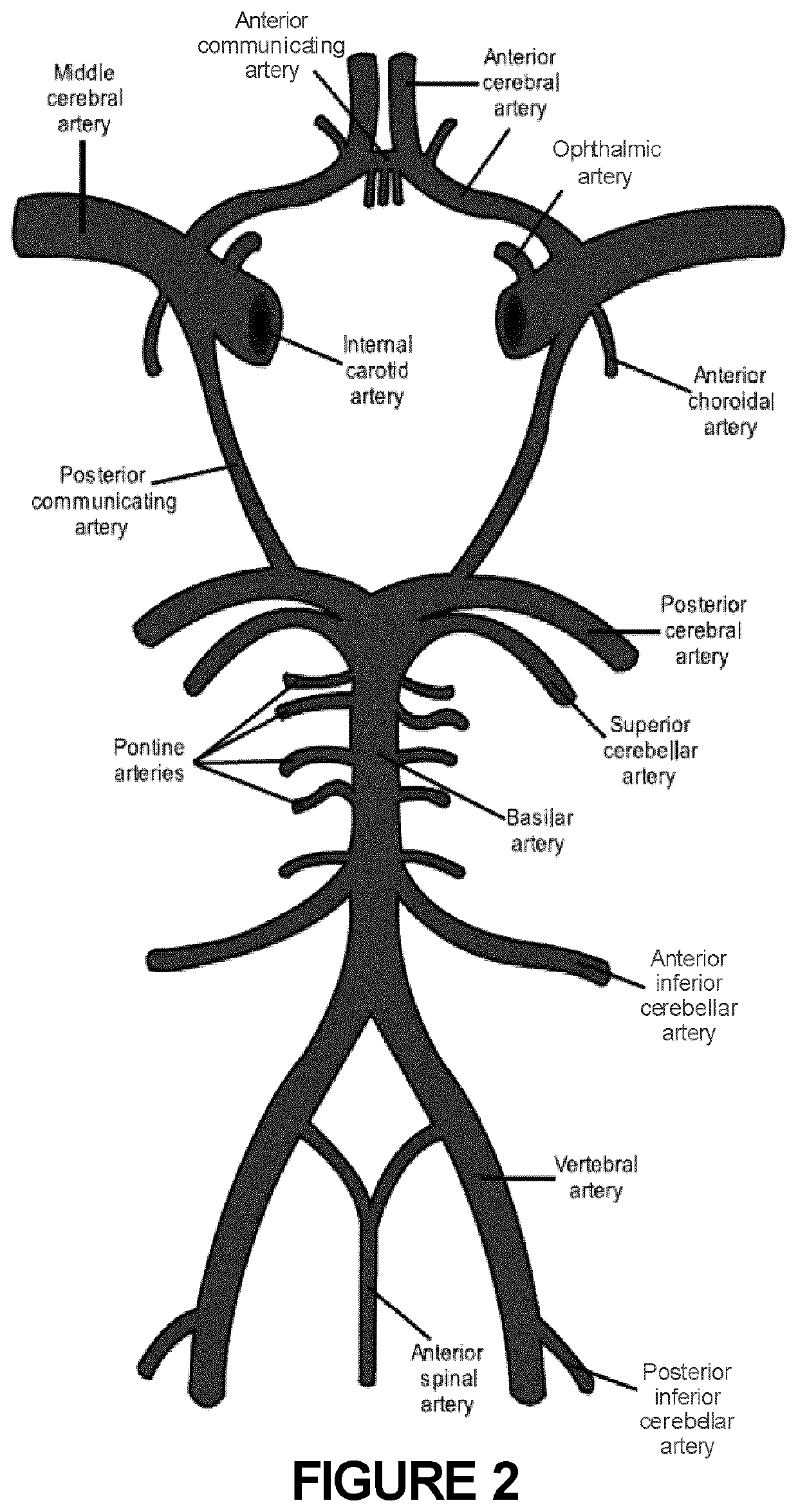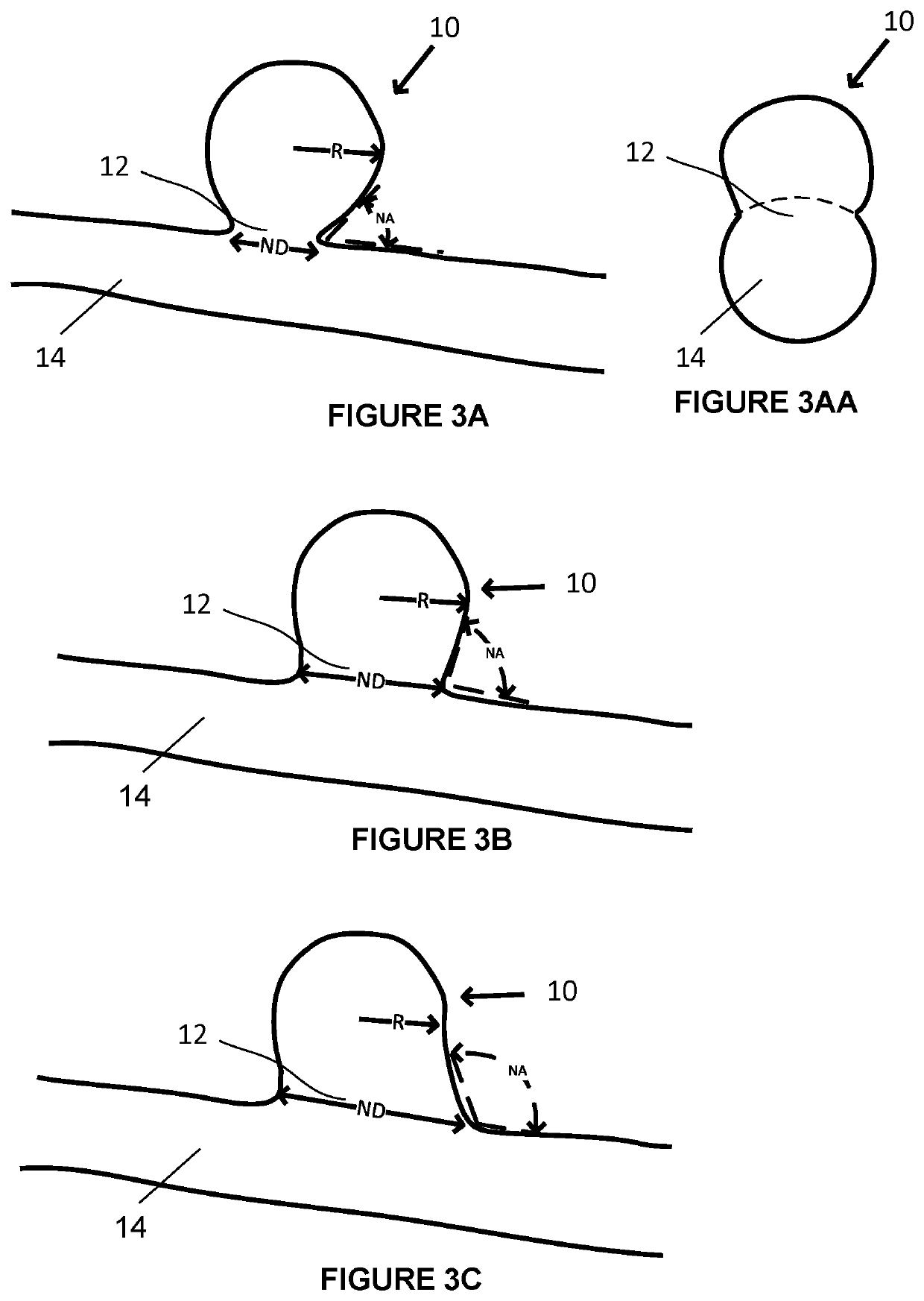Stent and Catheter Systems for Treatment of Unstable Plaque and Cerebral Aneurysm
a catheter system and cerebral aneurysm technology, applied in the field of coaxial stent and catheter system and medical procedures, can solve the problems of narrowing or stenosis of the artery, patient may become symptomatic, and blood flow restriction
- Summary
- Abstract
- Description
- Claims
- Application Information
AI Technical Summary
Benefits of technology
Problems solved by technology
Method used
Image
Examples
Embodiment Construction
4. Introduction and Rationale
[0092]The inventor understood that patients may be at high risk for AS / TIAs if they have aggressive-looking or unstable plaque at the CCA bifurcation even if they don't have significant carotid stenosis.
[0093]An unstable plaque will typically have produced symptoms in the ipsilateral circulation (e.g. amaurosis fugax, TIA) and have an irregular shape and generally be adhered to a smaller proportion of the arterial vessel as compared to an atherosclerotic plaque where the degree of stenosis is greater than 50%. Due to its irregular shape, blood flow around the unstable plaque may be turbulent which may lead to the plaque, or portions of the plaque, breaking free.
[0094]The diagnosis of unstable plaque may be made using a combination of factors after a patient has exhibited various symptoms. These factors include: presence of irregular plaque at the ipsilateral carotid origin determined by imaging; absence of any other risk factors (e.g. cardiac issues such...
PUM
| Property | Measurement | Unit |
|---|---|---|
| Length | aaaaa | aaaaa |
| Fraction | aaaaa | aaaaa |
| Time | aaaaa | aaaaa |
Abstract
Description
Claims
Application Information
 Login to View More
Login to View More - R&D
- Intellectual Property
- Life Sciences
- Materials
- Tech Scout
- Unparalleled Data Quality
- Higher Quality Content
- 60% Fewer Hallucinations
Browse by: Latest US Patents, China's latest patents, Technical Efficacy Thesaurus, Application Domain, Technology Topic, Popular Technical Reports.
© 2025 PatSnap. All rights reserved.Legal|Privacy policy|Modern Slavery Act Transparency Statement|Sitemap|About US| Contact US: help@patsnap.com



